Recall that denotes the real number line. denotes the 2-dimensional plane of all column vectors of height 2 (i.e. ); denotes the 3-dimensional space of all column vectors of height 3 (i.e. ; and more generally, denotes the -dimensional space of all column vectors of height (i.e. ).
02. Matrices: examples
02. Examples
Vectors in the plane
In the last video, we saw that a 2-by-2 matrix of numbers defines a geometric transformation of the plane :
Just as the coordinates encode points in the plane, we should think of the matrix as encoding a transformation of the plane. In this lecture, we will take a range of examples and see what the corresponding transformation looks like.
Example 1
Let . If I apply to then I get This takes to the point on the -axis with the same -coordinate, so represents a vertical projection map to the -axis.
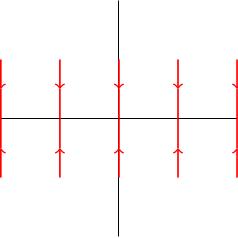
Example 2
Consider the action of . This sends to ; this transformation leaves everything as it was: it is called the identity transformation. We call this matrix the identity matrix, and we often write this matrix as ; it plays the role of the number in the algebra of matrices.
Useful lemma
Let , let and . Then
-
is the first column of , i.e. .
-
is the second column of , i.e. .
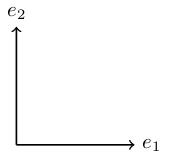
We'll call basis vectors, which basically means that any other vector can be written as a combination of and in a unique way. More on this in MATH220.
We'll just check it for : The calculation for is similar.
Example 3
Take .
-
Where does go? It goes to the first column of , which is .
-
Where does go? It goes to the second column of , which is .
So and get switched. This corresponds to a reflection in the line :
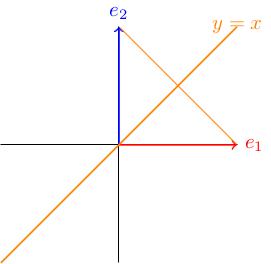
Let's check that the line is indeed fixed by the action of . The vectors (and only these ones) lie on this line, so let's compute: which indeed tells us that the points on the line are fixed.
Example 4
Take .
-
Where does go? It goes to the first column of , which is .
-
Where does go? It goes to the second column of , which is .
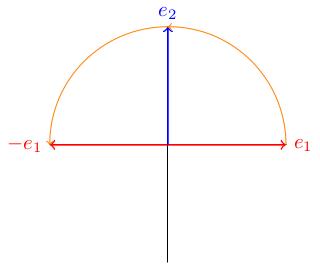
We see that this looks like a 90 degree ( radian) rotation. This makes sense, because the matrix for a rotation by an angle specialises to when , because and .
Example 5
Take . We have
-
,
-
.
So is fixed, but is slanted over in the -direction. In fact, the whole -axis gets slanted in the -direction, for example if we compute we get
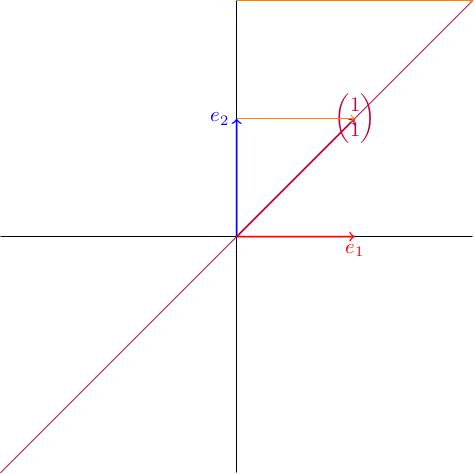
Example 6
As one final example, we'll take . What on earth does this correspond to? I claim that it corresponds to a shear in a different direction. How can we find the fixed direction?
If points in the direction fixed by then (that's what it means to be fixed). Therefore
In other words, the first entries of and must coincide, and so must the second entries. This gives us a pair of linear simultaneous equations: These are both equivalent to , so the line is fixed.
Not all matrices have fixed directions, but if they do then this method will find it.
Outlook
In the next video, we will take a look at bigger matrices and higher-dimensional spaces.